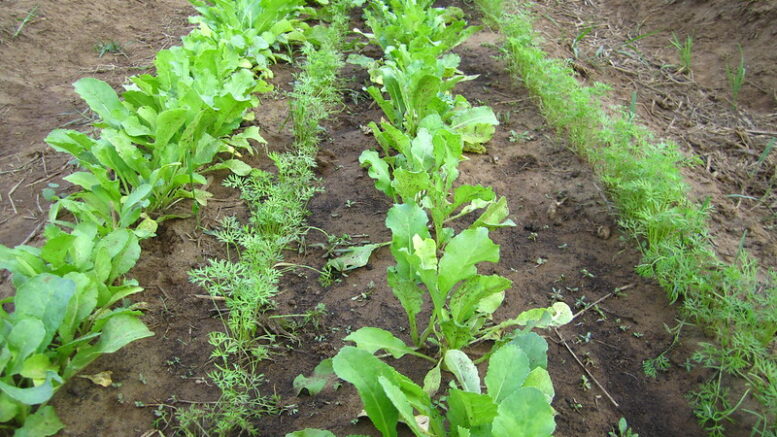Post Credit – Companion Planting, Radish/Carrot – VitaminGreen – Flickr
Gardening is not just about planting seeds and waiting for them to grow; it’s an art and a science that involves understanding the relationships between plants and their environment. Among the most effective strategies to enhance your garden’s health and productivity are Crop Rotation, Succession Planting, and Companion Planting, often referred to collectively as the “Three Sisters” of the companion planting method. These techniques work harmoniously to maximize space, increase yields, promote soil health, and encourage natural pest control. In this article, we will delve into each of these vital methods, exploring their benefits and practical implementation in your garden.
1. CROP ROTATION
Definition:
Crop rotation involves systematically changing the types of crops grown in a particular area of your garden over time. This technique is based on the principle that different plants have varying nutrient requirements and pest profiles, which can significantly impact the soil and the ecosystem.
Benefits:
Soil Preservation: Rotating crops helps maintain soil fertility and reduces soil erosion. Different plants contribute various nutrients to the soil, ensuring a balanced nutrient profile.
Pest and Disease Control: By rotating crops, you can disrupt the life cycles of pests and diseases that thrive on specific plants, reducing the likelihood of infestations.
Nutrient Management: Certain plants, such as legumes, enrich the soil with nitrogen, which can benefit the subsequent crops in the rotation.
How to Implement:
Start by planning a rotation schedule that typically spans three to four years. Group plants into families and alternate them in your garden beds. For example:
Year 1: Plant legumes (e.g., peas or beans)
Year 2: Follow with leafy greens (e.g., lettuce or spinach)
Year 3: Plant root vegetables (e.g., carrots or potatoes)
Legumes: (e.g., peas, beans) help fix nitrogen in the soil. Follow with nitrogen-demanding crops like corn or leafy greens.
Root Vegetables: (e.g., carrots, beets) can be planted after legumes to take advantage of the nitrogen in the soil.
Brassicas: (e.g., cabbage, broccoli) should follow legumes in the rotation. Avoid planting them in the same spot every year to prevent pests and diseases.
Nightshades: (e.g., tomatoes, peppers, potatoes) should be followed by non-nightshade crops to avoid soil-borne diseases.
Squash Family: (e.g., zucchini, pumpkins) should follow crops like beans or corn, which enrich the soil.
Leafy Greens: (e.g., spinach, lettuce) can be planted after heavy feeders like tomatoes to take advantage of residual nutrients.
Allium Family: (e.g., onions, garlic) can follow root crops and brassicas, helping to deter pests from subsequent crops.
Herbs: Certain herbs like cilantro or dill can follow various crops, enriching flavor and helping deter pests.
Cover Crops: Using crops like clover or rye in off-seasons can enhance soil health and organic matter.
Melons: Can follow a crop of legumes or brassicas, enriching the soil while filling summer space.

